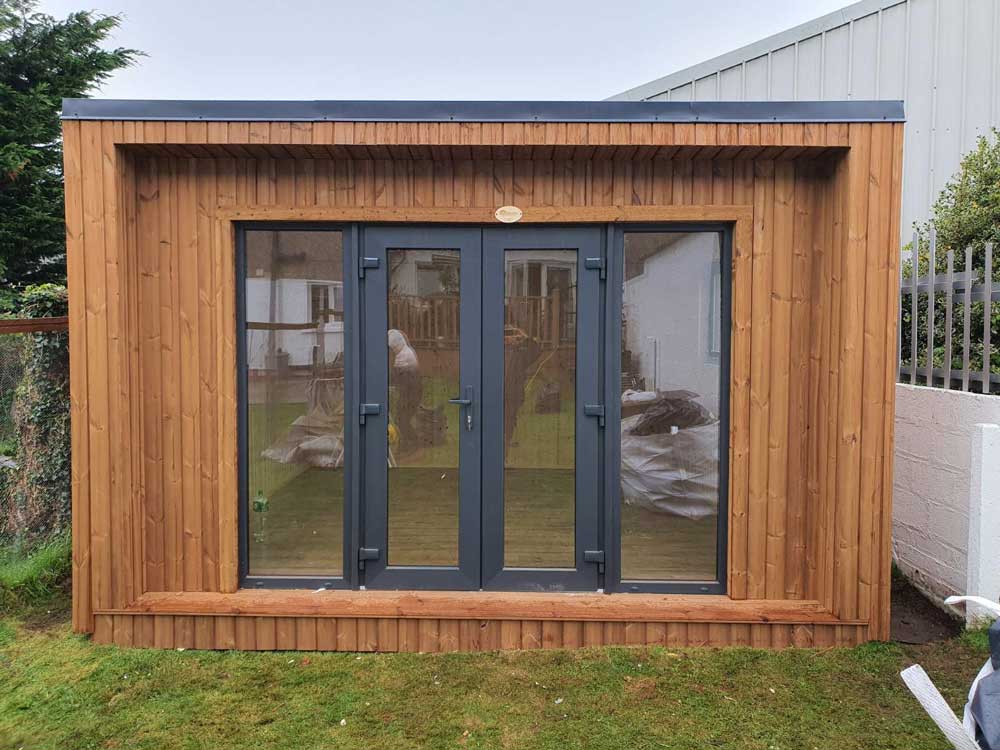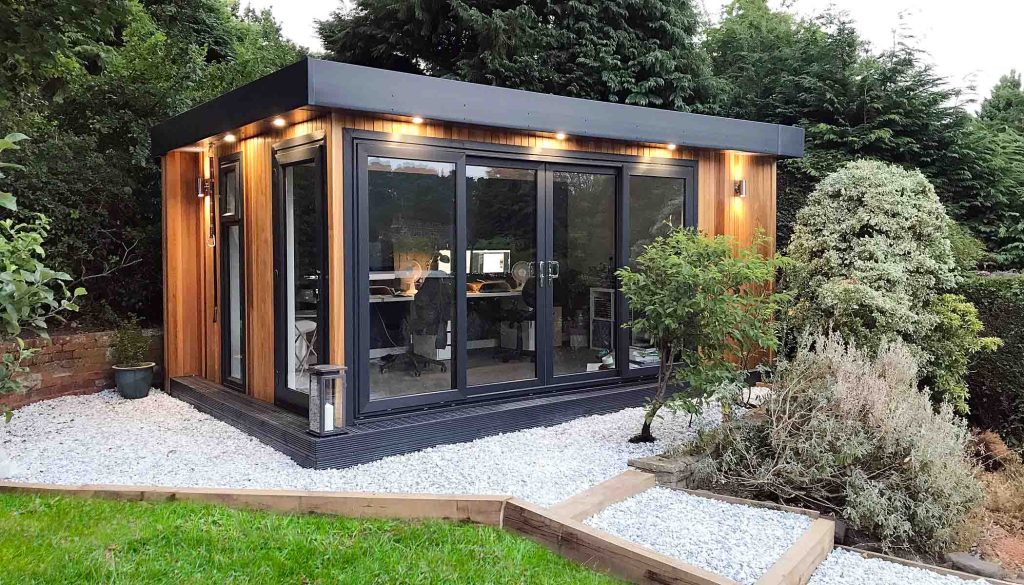Great Suggestions On Planning Permission For Garden Outhouses
Great Suggestions On Planning Permission For Garden Outhouses
Blog Article
What Planning Permits Are Needed For Gardens, Rooms, Etc. In Terms Of Changes Of Use?
Planning permission may be needed for the construction of gardens, conservatories, and outhouses. Planning permission is required for changes in use.
In most cases the planning permit will be required to convert non-residential structures (such as garages and agricultural buildings) to residential areas or garden offices. This is because a modification to the purpose of the structure will be required.
Garden Rooms as Living Accommodation:
Use of a room in the garden to function as an independent living unit (e.g. guest house, rental unit) is considered a change of usage. Planning permission is required to make sure that the building meets residential standards and the regulations.
Business Use
Planning permission may be required in the event that you intend to make use of the garden, conservatory, extension, etc. to serve a business purpose (e.g. as an office in a home business with frequent guests as well as employees). It's because of the impact it could have on the neighbourhood like noise, traffic and parking.
Educational or Community Use:
Changing the use of a garden to be an educational or community space (such as the use of a meeting room or classroom) is also a requirement for planning permission. Local councils will decide the appropriateness and impact of the proposed location.
Impact on Local Infrastructure
Planning permission will be required for any changes in usage that have a significant impact upon local infrastructure. As part of the planning process the local authority must be able to assess the impacts.
Dual Use
In the case of properties that are mixed-use (e.g., residential and commercial) A permit to plan is normally needed to clearly define the various purposes.
More footfall, traffic and revenue:
If the proposed change of usage could result in increased traffic or increase the amount of people that use the area (e.g. the conversion of the garden into a store) Planning approval is needed to minimize the impact on the area around it.
Building Regulations Conformity
Although it is not an issue planning permissions, any changes in the use of a space must be governed by construction regulations that address security as well as health and energy efficiency standards. This is crucial in the process of converting spaces into habitable ones.
Environmental Impact:
Any change in use that could have an impact on the environment, for instance as the conversion of agricultural land into an area for residential development, will need planning permission. Planning applications can include an environmental assessment.
Impact of Community and Amenity:
The most important consideration is how the project will impact on the local community and its character. As an example, converting an old garden into a cafe would need planning permission to ensure it is compatible with the community's plans and protects the local amenities.
Designated Areas:
In areas designated as National Parks, conservation areas or Areas of Outstanding Natural Beauty(AONB) The usage of land is subject to more strict restrictions to maintain the look and feel of the region. Planning permission is crucial in these cases.
Local Planning Policies
Local authorities for planning have policies which vary greatly regarding how they deal with changes in use. Consult these policies in order to determine what modifications require permission and which criteria need to be fulfilled.
Planning permission is generally required for any major changes in the use of the garden room, conservatory, outhouse or garden office. The new use must be suitable for the location, and conform to the federal and local planning regulations, as well as address any possible social and environmental negative impacts. Early discussion with the local authority responsible for planning is essential to establish the specific requirements for the project and obtain approvals. Check out the recommended garden rooms near me for website recommendations including do you need planning permission for a garden room, costco garden buildings, best electric heater for cabin, garden rooms in St Albans, Tring garden rooms, small garden office, garden room or extension, conservatories and garden rooms, garden rooms, garden rooms and more.
What Kinds Of Permissions Are Needed To Construct Gardens And Other Structures?
The impact on the environment of building gardens, conservatories, garden rooms or outhouses, and extension and garden offices can be significant in determining the need for an application for a permit to plan. Here are the key environmental aspects to be considered: Biodiversity and Wildlife:
If the proposed structure impacts local wildlife habitats like hedgerows, trees or ponds then the planning permit is required. An ecological study may be needed to assess and reduce the impacts on biodiversity.
Habitats and Species that are Protected
Planning permits are required when the property is protected animals (e.g. bats, newts) or is located within or close to habitats of Special Scientific Interest (SSSI). To protect them, it is necessary to implement specific measures.
Preservation Orders for Trees Preservation Orders:
The planning permission must be obtained when the proposed structure requires the removal of trees or alteration of trees protected by TPOs. Local authorities will assess the impact and may require replacement planting or other mitigation measures.
Risk of flooding and Water Management Risk and Water Management
Planning permits may be required for development within flood-prone or near waterbodies. If the building is going to be constructed, a flood risk assessment (FRA), which includes drainage solutions as well as the determination of whether it will increase risk of flooding is required to be conducted.
Sustainable Construction Practices
In order to ensure sustainable construction and materials are used, as well as sustainable construction techniques are employed permits for planning may be required. This is a concern for energy efficiency, carbon footprint of construction materials, and insulation.
Drainage and Surface Runoff
It is essential to take into consideration the impact on the environment that comes with any new construction. Planning permission is needed for proper drainage systems in order to prevent flooding and waterlogging.
Soil Stability and Soil:
A planning permit is needed if the proposed construction may impact the stability of soil or the land. Planning permission is required when the construction could impact soil stability or soil quality.
Air Quality:
Planning permission is required to build development near industrial zones or major highways that could affect local air pollution. This ensures that air pollutant levels remain within acceptable levels and mitigation measures are in place.
Noise Pollution:
Planning permission will be required when the construction of an extension or garden space is likely to cause significant noise, like an music studio or workshop. The local authority will evaluate noise levels as well as possible effects on the surrounding surroundings and the neighbors.
Waste Management:
It is crucial to manage the waste appropriately during and after construction. Planning permission is required to ensure that adequate facilities are provided for recycling and disposal of waste while minimizing environmental impact.
Energy Efficiency
Planning permission can include requirements for energy efficiency, like the utilization of solar panels, high-performance glass or other green technologies. This will reduce the impact of the new building on the environment.
Conformity to Environmental Regulations:
Environmental regulations such as the UK Environmental Protection Act must be observed by all developments. Planning permission is required to ensure that the development meets all legal and environmental standards.
Planning permissions for conservatories or gardens, as well as outhouses, office buildings, and garden offices need to take into consideration the environmental impact of the project. It is important to consult with local authorities at the beginning of the process of planning to be able to understand the specific requirements. This will ensure that the project is sustainable and is in compliance with all applicable laws. Read the top do garden rooms add value for blog examples including composite summer house, luxury outhouse, garden room or extension, Tring garden rooms, costco garden room, costco outhouse, what size garden room without planning permission, garden rooms brookmans park, garden room planning permission, how to lay decking on soil and more.
What Planning Permission Is Required For Gardens, Outdoor Spaces, Etc. In Terms Of Appearance And Design?
Planning to build garden office, conservatories or outhouses? The style and design of the building will play an important factor in determining if planning permission is needed. Here are some crucial things to think about:
If the proposed structure is within the permissible development rights for your property, planning permission might not be required. There are certain specifications regarding design and appearance to be fulfilled.
Size and Scale
The structure that is built should be proportional in size to the land and adjoining structures. The size of the new structure must be proportionate to the existing property and surrounding structures.
Mass and Height:
The size and mass of the building must be proportional to the size of the existing structure and the buildings surrounding it. Typically, planning permission is required for structures which over the limit of height or do not scale with the surrounding area.
Materials and Finishes:
The materials and finishes chosen should compliment the property and surrounding buildings. It may be necessary to obtain planning approval if materials are not compatible with the character and design of the space.
Design Harmony
The style of the proposed structure must be compatible with the architectural style and appearance of the building or property surrounding it. If the proposed design is not compatible with the local character and appearance the planning approval will be required.
Roof Design:
The style of your roof should be in harmony with the architecture of the property you're working on and the structures around it. A planning permit may be needed for a roof style that does not match the local style or appearance.
Fenestration Windows and Doors:
The layout and design of the door and windows must complement the property and its surroundings. The proposed fenestration might require planning approval if not in keeping the local character and look.
Facade Treatment
The exterior treatment should be harmonious with the surrounding buildings and structures. It is possible to seek planning permission for any proposed facade treatment that is not compatible with the character and appearance of the location.
Landscape and Surroundings
The landscaping design surrounding a new construction should be in harmony with surrounding structures and existing property. Planning permission might be required if the proposed landscaping does not fit with the local culture and style.
Visual Impact
The proposed structure must be able to have a minimal impact on its surroundings. The proposed structure may require planning permission if it has a negative aesthetic impact on its surroundings.
Heritage and Conservation Areas
The requirements for appearance and design are more stringent in the case of a property that is in a heritage conservation area. A planning permit may be required to build an structure that meets the criteria.
Guidelines for architectural and planning:
Local planning authorities generally have guidelines for design and appearance which must be adhered to. Planning permission may be required if the proposed structure is not in accordance to these standards.
Planning permission is often determined by the appearance and design of the building. This includes garden rooms, conservatories or outhouses. Contact the local planning authority at the earliest possible point in the planning phase to make sure that the design conforms to the local aesthetic and character guidelines, and also to determine if planning permission is needed. Follow the top heater for garden room for more recommendations including composite garden rooms, garden office hertfordshire, garden office, outhouse buildings, outhouse uk, garden office hertfordshire, garden rooms near me, ground screws vs concrete, myouthouse, garden office and more.